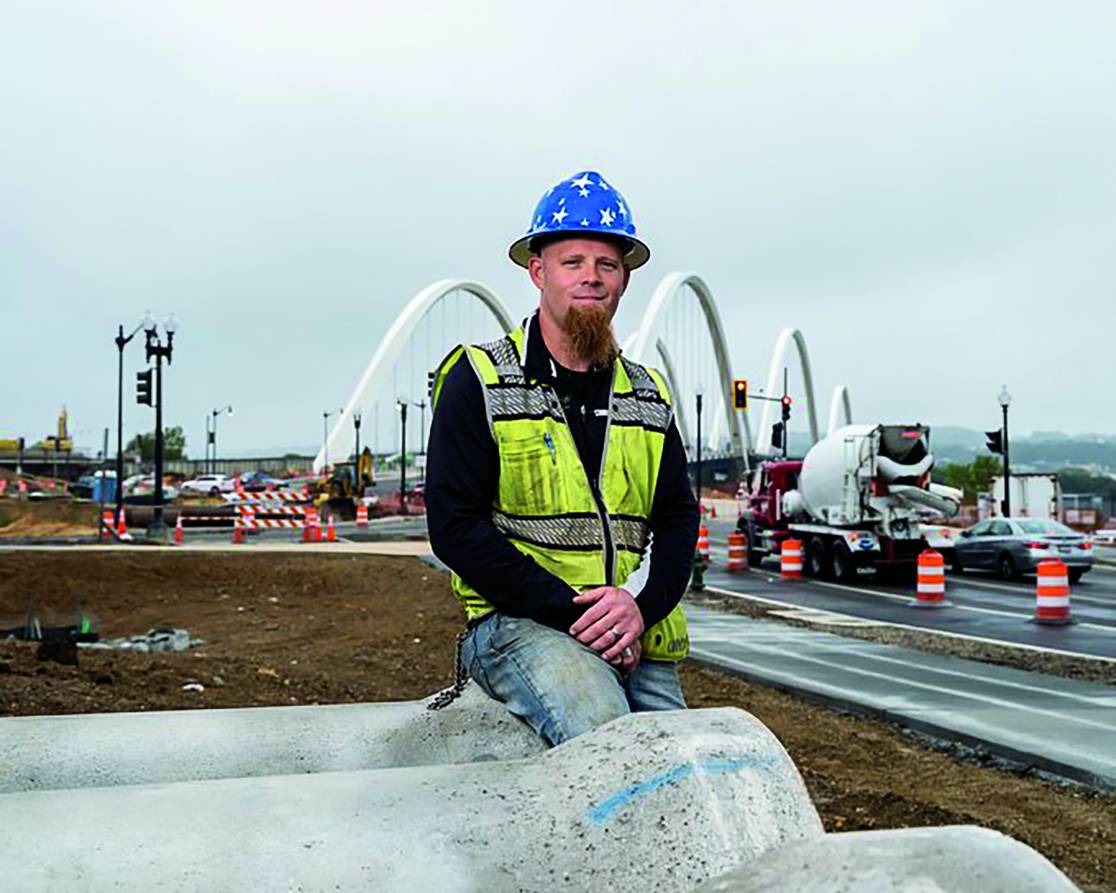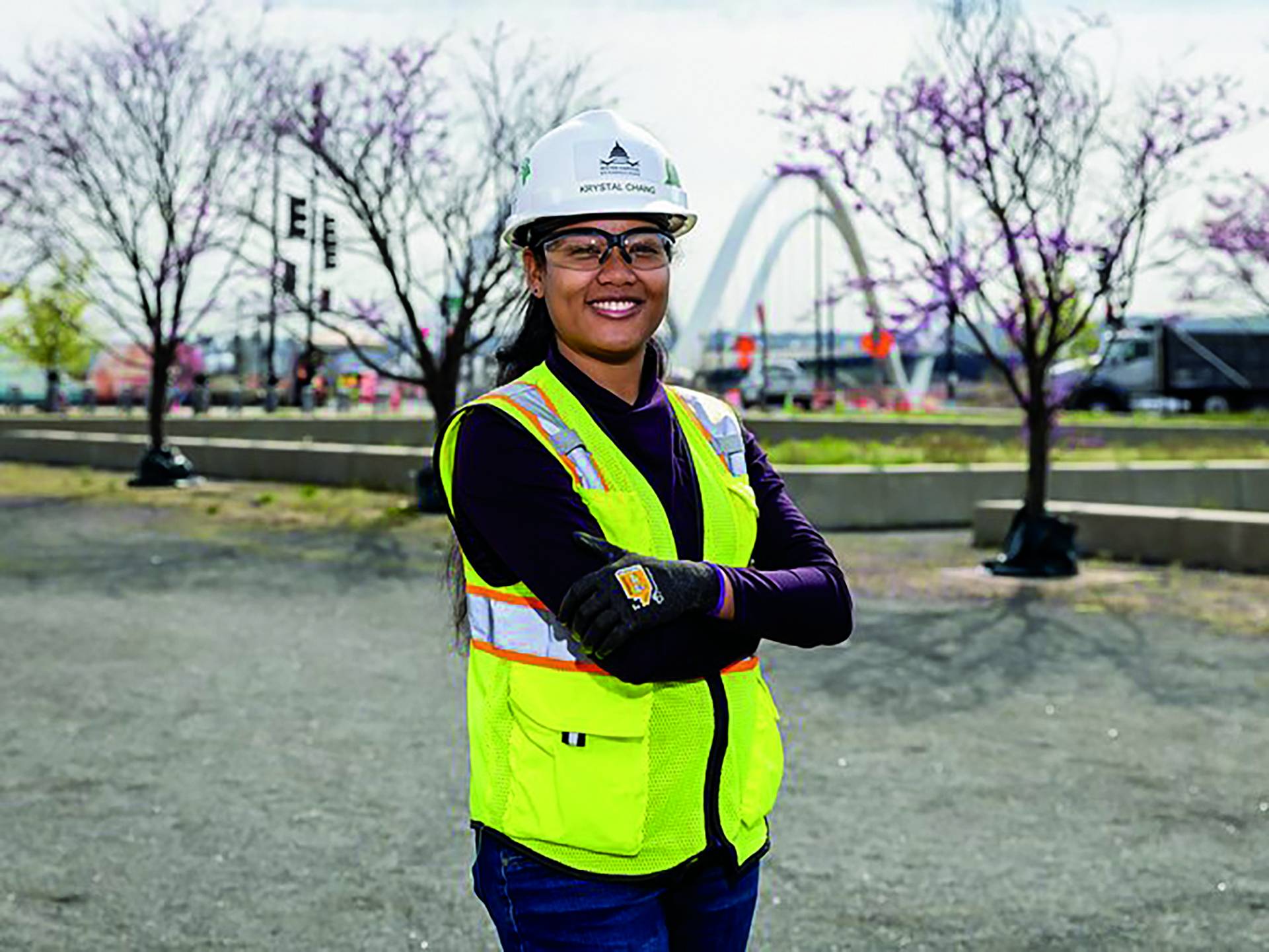
DESIGNER
2023
There is a growing disconnect between the rising number of available construction jobs and the skillsets of the populace. It’s a particular concern in economically underserved areas. Anticipating and understanding that need, the District Department of Transportation invested in three workforce development programs during the Frederick Douglass Memorial Bridge project:
- Construction Management Training Program (CMTP): A field service and classroom curriculum that provides accelerated instruction and opportunities for District residents with little to no experience in high demand jobs to earn certifications and increase chances of employment in construction management.
- STRIVE Program: A six-week, hands-on mentoring program that exposed District high school students with a proven affinity for STEM education to key discipline areas in heavy civil engineering.
- Jobenomics DC: A 10-week, grassroots program focused on basic job skills and heavy civil training to connect residents in the most impoverished communities in the District of Columbia to construction jobs and startup businesses.
CMTP has been unquestionably impactful. For Jon Whitney, HNTB program manager, it wasn’t his first experience with the program. HNTB partnered with DDOT to develop the program during the 11th Street Bridge Project to provide a practical pathway to employment for those expressing interest in construction but lacking access to training.



Today, CMTP is a more polished version of itself. “It has been standardized, so that no matter who is doing the program they can easily pick it up and run with it,” Whitney said.
Gary Olson, who comes from a family of teachers, ran the program for HNTB at the Frederick Douglass Memorial Bridge site.
“While it’s not unusual for a construction project to include an on-the-job training program, it’s typically geared toward laborers, carpenters, cement masons, etc.,” said Olson. “They are not typically training for those on the quality assurance side of the table.”
During the training, CMTP accelerates instruction and opportunities for certifications in concrete, soils and aggregate compaction, safety and flagging and pavement marking to minorities, women, and individuals from underserved communities interested in the infrastructure construction industry. Students also can acquire ACI Concrete Field Testing and Soils and Aggregate Compaction Technician certifications.
Participants receive in-class training, and they spend time shadowing workers and inspectors in the field, receiving mentorship and ample exposure to on-site concrete applications such as retaining wall placements and approach slab construction. Following the preparatory training, participants take the certification exams in the areas of study.
Cherie Gibson, HNTB outreach and communications manager, says HNTB partners with several workforce development groups, including The Department of Employment Services, the Department of Veteran Affairs, and DDOT, to find the participants.
“We let them know when we’re ready to gear up for a new class, and they help us get the word out,” Gibson said. “They also refer people to us.”
From there, the applicants participate in a screening process. “We give them a rudimentary math test to make sure they are capable of doing the math to pass the certification as well as a reading component,” Whitney said.
It’s an eight-week, intensive class and field training program. Students are paid two stipends, one in the middle of the program and one at the end. They’re also provided with safety gear and access to transportation to the classes. That enables them to continue to pay their bills while participating in the program. The program pays for the certification classes and testing as well.
DDOT’s Joe Dorsey, acting program manager, is encouraged by the success of the program.
“We’re seeing benefits from the CMTP training on the 11th Street program, as many are all still involved in the industry,” Dorsey said. “We want to leave a legacy by contributing to a growing skilled workforce in the District and build careers.”
Along the way, the team developed a deeper understanding of the challenges that many of area residents must overcome.
“Some of them experience homelessness or have been hospitalized, had COVID or other personal issues,” Gibson said. “Being able to respond and be flexible to their needs has to be built into any program.”
Dorsey agreed that the problem is more than just exposure to the jobs and opportunities. Participants might need a driver’s license, a resume or even an address.
In addition to CMTP, additional programs like STRIVE and Jobenomics DC are part of DDOT’s efforts to create opportunities and help people find lasting careers in construction.
SEE MORE ARTICLES
MORE DESIGNER STORIES
ALLEGIANT STADIUM
CASEY ARBORWAY
CHAMP CLARK BRIDGE
ORLANDO INTERNATIONAL AIRPORT, SOUTH TERMINAL
US 290 Program
